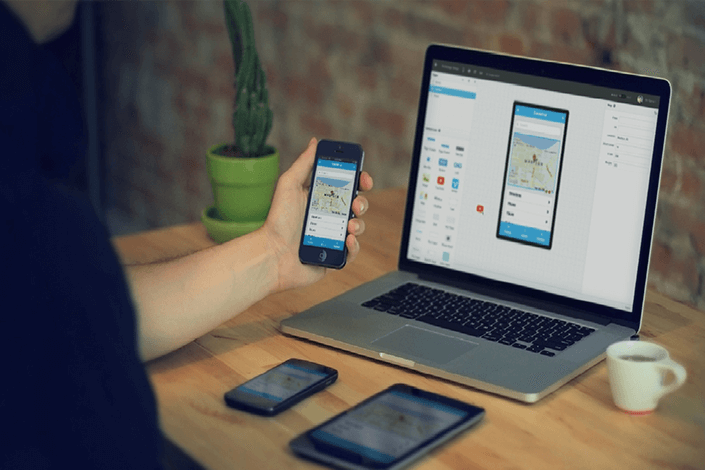
Revolutionizing the software development industry!
Adevi is our commercial project and is based on the strong backbone of our newly developed technology. This project tackles our industry, largely replacing a significant portion of the SDLC processes through automated analysis, UI prototyping, design, project development and management capabilities. We aim to achieve a unique system software design solution that uses smart processes to cut the development time, resources and costs usually associated with the development for the client. Microsoft Office Crack Adevi seeks to save software development time by 60-90 percent while keeping high product quality. Adevi’s clear development path improves accuracy with less room for human error, eliminates the communication barrier between all technically and non-technically capable parties, optimises the refinement of any programming language, and hosts a significant reduction in resources needed to achieve your primary goals.Adevi is designed to:
Apply AI to the requirements stage and come up with a (proposed) project development plan; Create a UI prototype with foundational front-end code based on simple user input. Through a simple workflow interface, users will be able to validate and customise the generated system prototype. Be scalable so that development in that area can continue at a later time. Tools for collaboration and project management should be included. For software system applications, we work with various industries. This will involve continual Machine Learning based on real-world initiatives and data acquired from the internet.Goals:
- Best way to design and build, test prototype
- Get on the market to test your idea within weeks not months
- Cost reduction to a fraction of current costs
- We are building AI that will replace ourselves – software system developers
- We will be able to understand the security of the system and innovate within it to improve it to the best possible case. Our goal is to create a live API
 Soon to test Pix2Code during the 1st stage of auto-generated GUI design & NLP to meet requirements There was an interesting publication made available to the public in late May 2017. It tests the ability to generate frontend code from a combination of Neural Networks Algorithms, such as CNN (Convolutional Neural Networks) for images and RNN (Recurrent Neural Networks with LSTM – Long Short Term Memory, in particular, was used in the study) for codes sequences.
When considering this question, there are a few key aspects that come to mind.
The article suggests that there is limited knowledge done with GAN (Generative Adversarial Networks) and we believe we should be able to provide such results in the near future. We have already achieved a working prototype, functional to the level where we can manipulate the data with ease and therefore practically apply new algorithms models for our R&D without time-consuming configurations. The publication is available here: https://arxiv.org/abs/1705.07962 The study presents an interesting premise suggesting that if this is done correctly, it has the potential to revolutionise how we develop the software in general. This is based on the system’s ability to essentially automate much of the most labour-intensive areas of the software programming making a lot of current processes redundant.
Machine Learning will not replace engineers or UI designers, but it will allow professionals to focus on higher-value jobs such as analysis and creative execution. Within the code, it can operate as an overall system design for new software, business rules, developing and implementing bespoke algorithm models.
If you assume that the achievement allows you to automate repetitive processes by first understanding a User Interface design and then programming its aspects, you’ll conclude that the User Interface will be a constraint for the algorithms that generate code.
Another limitation is that the algorithms can only provide GUI to the degree that the Machine Learning algorithm has been taught. We hope to achieve significant progress in this area. We believe we can make the GUI design to be practically as good as designed by more than 90% of the designers today. The results are geared towards allowing us to achieve a functional definition of ‘creativity’ for algorithms.
Natural Language Generation to develop project-specific Tech Documentation is another area we’ll be able to test soon. We’ve already completed a large portion of the document pre-processing, and the system recognizes documents based on their context and structure. All of this enables us to create a specific document structure for a certain software project.
Adevi is a project that aims to automate the SDLC to a large extent. We’re working on an AI Assistant that will automate and simplify the requirements gathering process, project commencement, and collaboration by suggesting technical documentation structure and providing development guidance.
Therefore, it can provide a clear development path and visualise GUI for your software project as per your inputted requirements.
We have access to the training data at each area of the development to launch commercially viable products.
You can read more on Adevi at www.adevi.io.
Soon to test Pix2Code during the 1st stage of auto-generated GUI design & NLP to meet requirements There was an interesting publication made available to the public in late May 2017. It tests the ability to generate frontend code from a combination of Neural Networks Algorithms, such as CNN (Convolutional Neural Networks) for images and RNN (Recurrent Neural Networks with LSTM – Long Short Term Memory, in particular, was used in the study) for codes sequences.
When considering this question, there are a few key aspects that come to mind.
The article suggests that there is limited knowledge done with GAN (Generative Adversarial Networks) and we believe we should be able to provide such results in the near future. We have already achieved a working prototype, functional to the level where we can manipulate the data with ease and therefore practically apply new algorithms models for our R&D without time-consuming configurations. The publication is available here: https://arxiv.org/abs/1705.07962 The study presents an interesting premise suggesting that if this is done correctly, it has the potential to revolutionise how we develop the software in general. This is based on the system’s ability to essentially automate much of the most labour-intensive areas of the software programming making a lot of current processes redundant.
Machine Learning will not replace engineers or UI designers, but it will allow professionals to focus on higher-value jobs such as analysis and creative execution. Within the code, it can operate as an overall system design for new software, business rules, developing and implementing bespoke algorithm models.
If you assume that the achievement allows you to automate repetitive processes by first understanding a User Interface design and then programming its aspects, you’ll conclude that the User Interface will be a constraint for the algorithms that generate code.
Another limitation is that the algorithms can only provide GUI to the degree that the Machine Learning algorithm has been taught. We hope to achieve significant progress in this area. We believe we can make the GUI design to be practically as good as designed by more than 90% of the designers today. The results are geared towards allowing us to achieve a functional definition of ‘creativity’ for algorithms.
Natural Language Generation to develop project-specific Tech Documentation is another area we’ll be able to test soon. We’ve already completed a large portion of the document pre-processing, and the system recognizes documents based on their context and structure. All of this enables us to create a specific document structure for a certain software project.
Adevi is a project that aims to automate the SDLC to a large extent. We’re working on an AI Assistant that will automate and simplify the requirements gathering process, project commencement, and collaboration by suggesting technical documentation structure and providing development guidance.
Therefore, it can provide a clear development path and visualise GUI for your software project as per your inputted requirements.
We have access to the training data at each area of the development to launch commercially viable products.
You can read more on Adevi at www.adevi.io.













